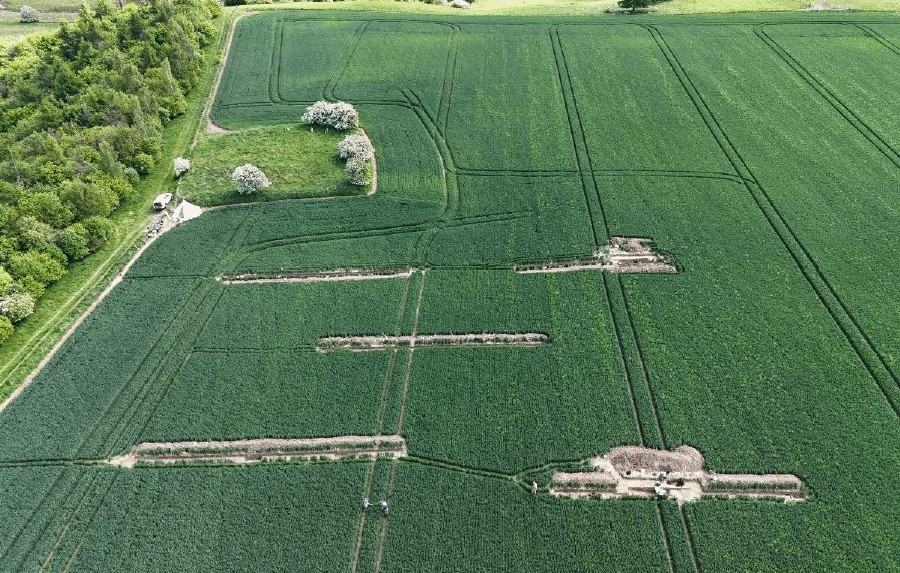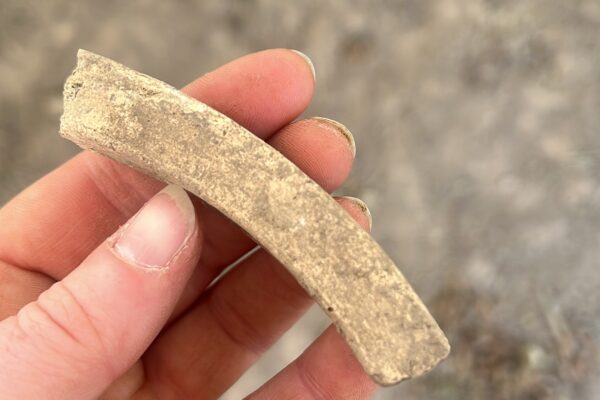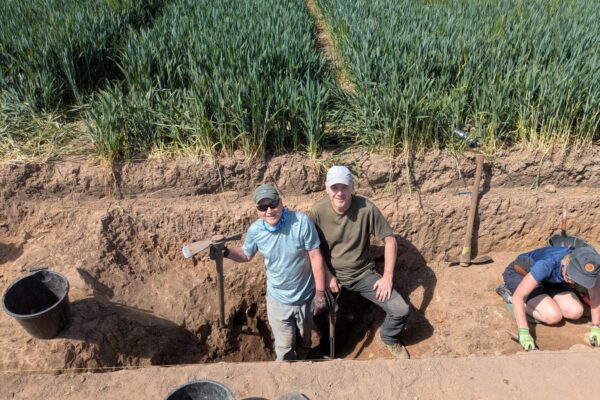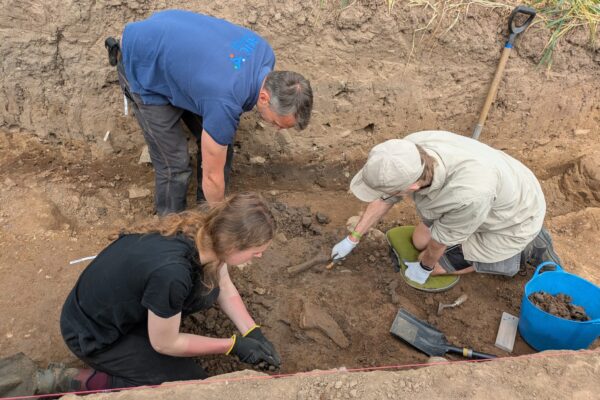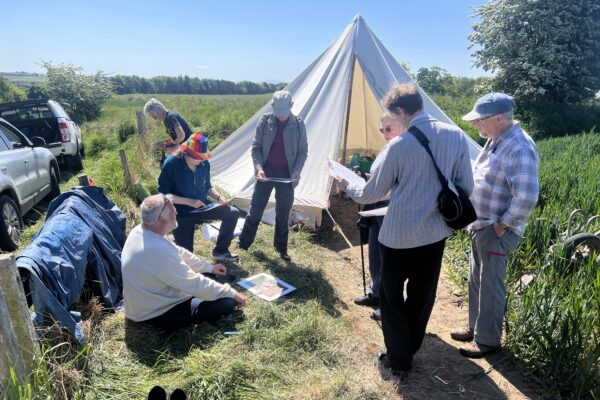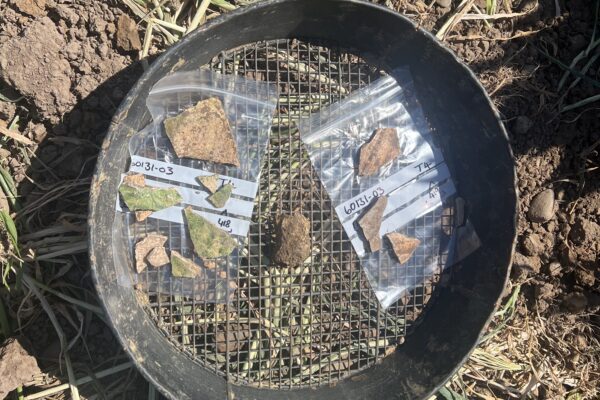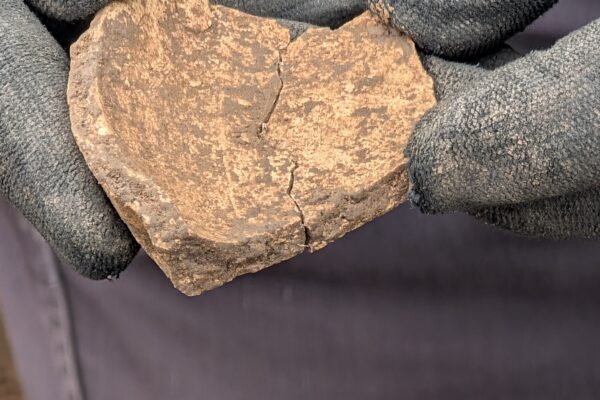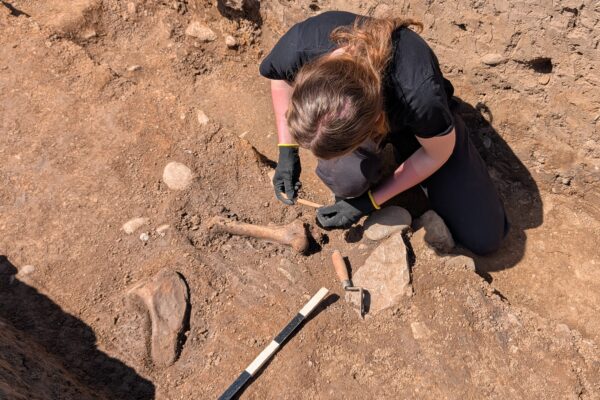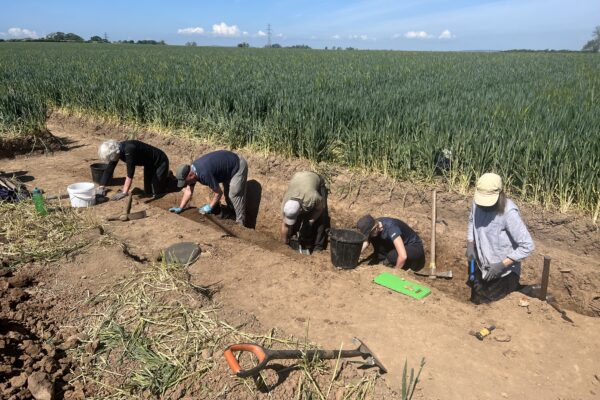Excavations at Horndean
Excavations at the site of a supposed deserted medieval village near Horndean in July 2024 have revealed exciting new discoveries about life on the Tweed in the medieval period.
Around 700m east of the current village of Horndean lie the remains of a medieval church. While traces of the church are visible above the ground, it has long been believed that a village and hospital also lay nearby. Uncovering the Tweed has undertaken geophysical survey and excavations to shed a little light on one of the area’s past settlements.
We are most grateful to the landowners, the Sloan family, who have been farming at Horndean for many years. They generously allowed us to undertake the work despite the field being in crop at the time of the excavations, and have been encouraging and accommodating throughout.
We should mention also everyone at Swinton Primary School, who joined us onsite, taking part in the excavations (and making some excellent discoveries of medieval pottery, no less!) and environment-focussed learning with Jenny from the TweedWATCH project. We also hosted a group of young adults from Borders Additional Needs Group, who did an excellent job contributing to excavating and recording.
AOC are working away at the post-excavation process now: sieving soil samples, having specialist analysis undertaken on various samples and artefacts, and so on. We will share more detailed updates as they become available, and the full report will be available for download in due course. What follows is a summary based on initial findings.
You can also find out more about the project via a recording of Project Manager Cathy MacIver’s presentation at the Edinburgh, Lothian and Borders Archaeology Conference in November 2025 (10 minutes long):
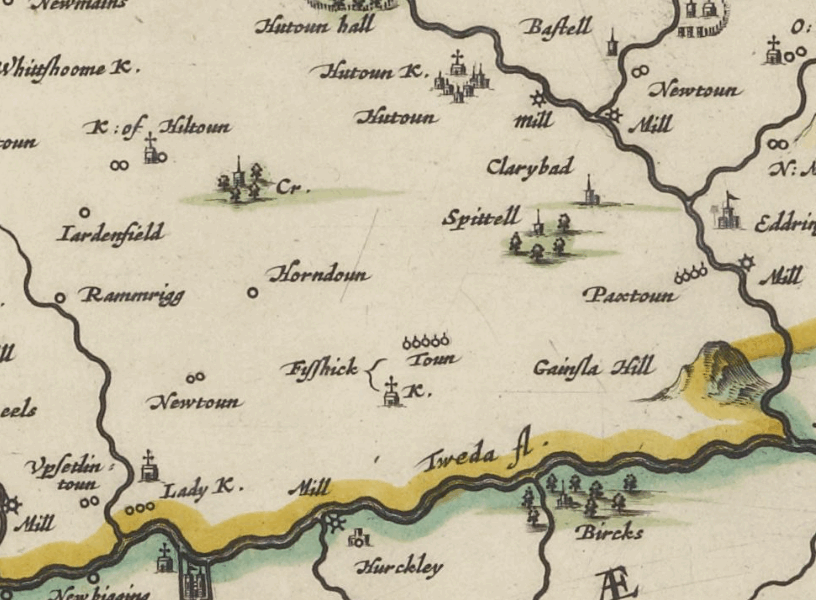
Horndean in the Archives
The earliest known mention of a settlement at Horndean is found within a writ thought to have been produced in around AD 1118. There are also records of a hospital in the area: in about AD 1240, Robert Byseth, Lord of Upsetlington, granted the Hospital of St Leonard to Kelso Abbey; the hospital was to be founded in his territory opposite Horwerden (Horndean). It is also mentioned in around 1300 as held by Kelso, with provision for a chaplain and two poor people.
The earliest depiction of Horndean on a map appears to be in Blaeu’s Atlas of Scotland, 1654, which shows ‘Horndoun’ and, to the east of it, ‘Spittell’ (hospital).
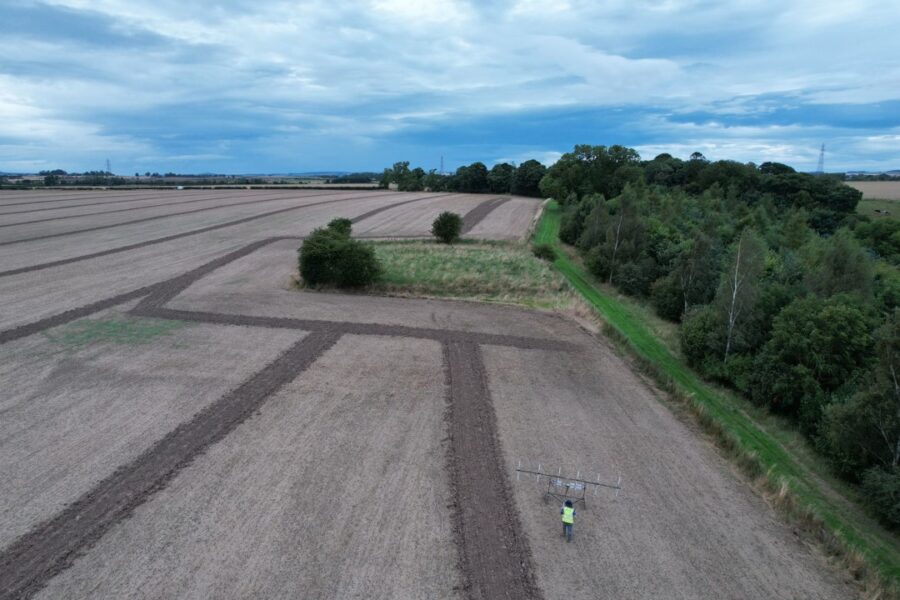
In late 2024, AOC carried out geophysical survey at Horndean, focussing on the areas to the north, south and west of the church site, where the village and hospital are thought to have been located. This revealed a variety of anomalies representing both natural and archaeological features.
The image below shows a plan of the site, with anomalies as identified in the geophysical survey data, overlain by the outline of trench locations
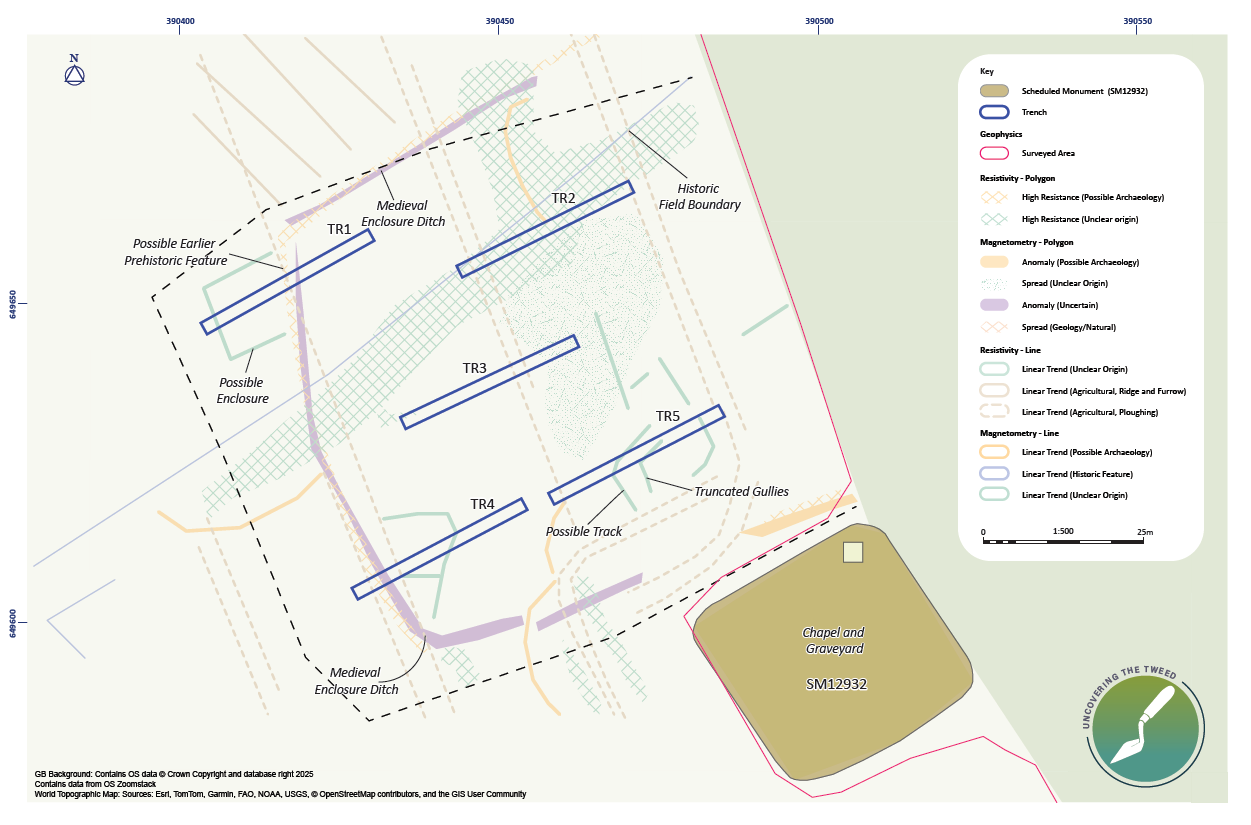
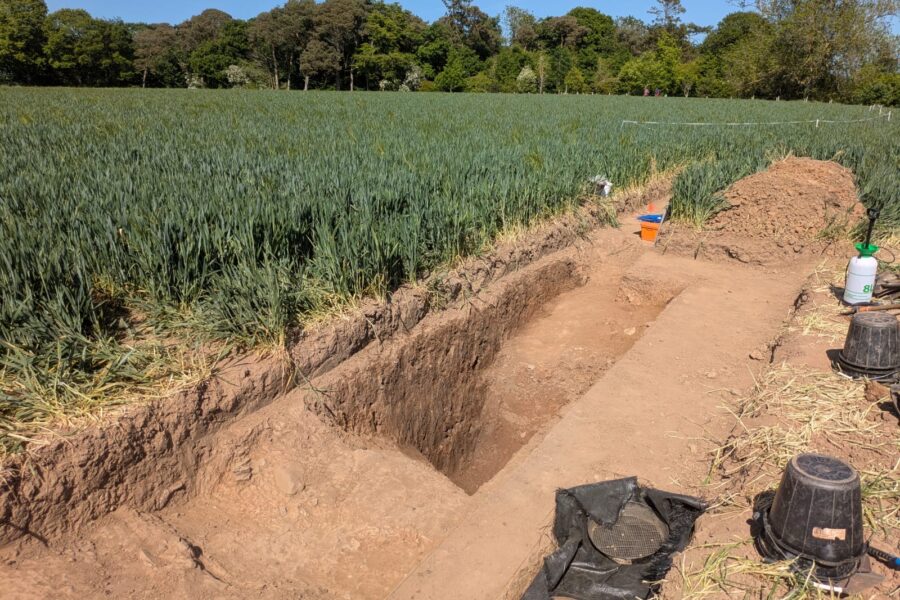
Excavations
The results of the geophysical survey were used to inform a programme of excavations. Five long, narrow trenches were opened, positioned to target some of the anomalies identified through geophysical survey.
Two trenches – Trench 1 and Trench 4 – were positioned to target a large sub-rectangular anomaly identified in geophysical survey data as a probable ditch forming the boundary of an enclosure. On excavation, this theory proved to be correct: a substantial ditch, over a metre deep with a bank on its interior edge, likely formed by upcast material from the digging of the ditch. The fill yielded a range of finds including animal bone of a range of species, and medieval pottery from a secure context at the base of the ditch, making it likely that the ditch itself is medieval. Evidence of a period of re-cutting and clearing the ditch perhaps indicates a period of change or reuse during its lifetime.
You can explore the ditch in 3D via the Sketchfab model below:
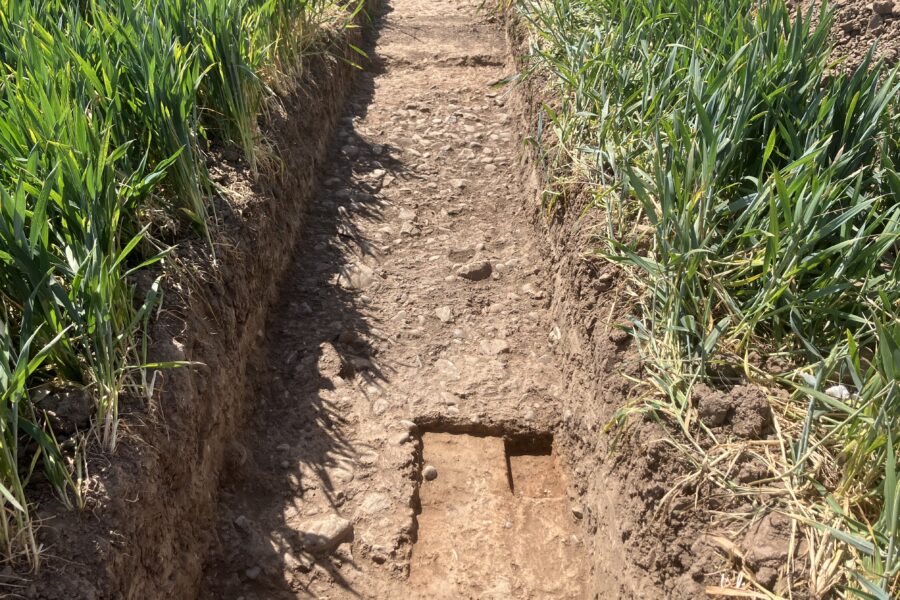
A stone-rich deposit probably representing a metalled surface (a level surface made of small pieces of stone) was identified in Trench 5. This might be interpreted as a track running between structures towards the church enclosure.
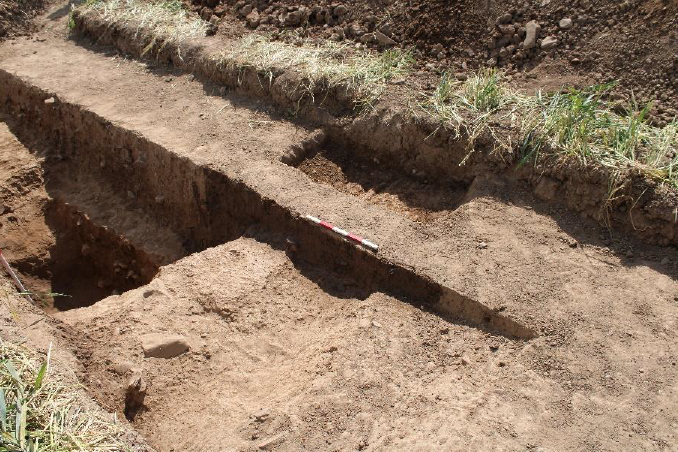
Also within Trench 1 were traces of a linear feature cut into the natural subsoil, with possible later prehistoric pottery in its fill, has been tentatively identified as a prehistoric feature, perhaps a small section of a gully. Although only a small section survives it has been tentatively speculated that the gully could be all that remains of a ring-ditch or drip gully relating to a prehistoric structure. The site’s position, sitting on a flat terrace overlooking the surrounding land near the Horndean and River Tweed, would have been a sought after settlement location from prehistory onwards.
Initial conclusions
The scale of the enclosure ditch suggests that it enclosed a significant site, likely in association with the nearby church which the enclosure’s position appears to respect. The assemblage of artefacts and ecofacts is fairly typical of a medieval site, and further analysis will yield deeper insights into the date of deposition, and the types of activities taking place at the site in the past.
The earlier, likely prehistoric feature, highlights the depth of time over which the site was selected for activity and/or occupation by past communities.
AOC are now working hard on the post-excavation analysis and interpretation of the results of the excavations: soil samples will be wet-sieved in hopes of yielding seeds, grains, charcoal and other small clues about the landscape in the past; animal bones will be identified to species; artefacts will be assessed and catalogued, revealing information about local industry, trade networks, wealth and status of the site and so on. We will share more information about all of this in due course!
Further reading
Dixon, P. (2003) “Champagne country: a review of medieval rural settlement in Lowland Scotland.” Conference Proceedings: Medieval or later rural settlement in Scotland: 10 Years On. Published by Historic Scotland: 53-64. (available here)
Hall D. (2006) “Unto yone hospital at tounis end’: the Scottish Medieval Hospital”. Tayside Fife Archaeol J 12 2006 Page(s): 89-106 (available here)
